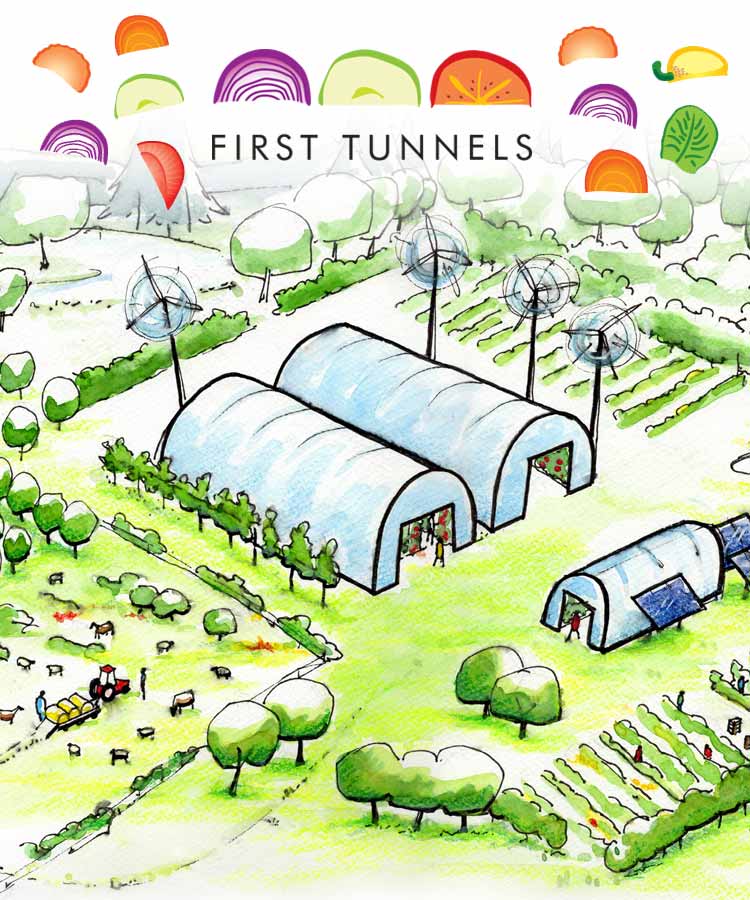Permaculture is a system of growing that works with nature to provide a yield to us that can endure over time while making sure that our planet comes to no harm. Outdoors forest garden and polyculture systems are more common in permaculture, but in a cold climate such as ours in the UK, a polytunnel can really help to extend the growing season and protect against more extreme weather. A polytunnel growing system can also use permaculture principles. Here are just some of the features that you might expect to see in a permaculture polytunnel:
In a polytunnel that utilises permaculture methods, vertical growing will be used to maximise the use of the space. A small tree may also help to maximise the yield from a relatively small space and that tree, taking up space high up in the centre of the tunnel, will be surrounded by other crops on different layers.
Rather than sowing annual crops every year, permaculture advocates the use of perennial plants, that will endure or come back year after year. A range of 'permanent' crops will reduce the cost in time to the gardener and provide a sustainable yield if cared for properly.
Rather than planting traditional annual vegetables in rows, a permaculture polytunnel will feature beds with mixed planting. Guilds of beneficial plants will be grown to support others, and companion plants will help one another in a wide range of different ways.
In a permaculture polytunnel, a 'no dig system' will often be employed to protect and conserve the soil. Rather than digging in manures or composts, organic mulches will be laid in order to return nutrients to the soil and make sure the yield can be maintained over time. These mulches will also help to reduce water loss from the soil in the heat of the summer.
Permaculture teaches that we should use and value the renewable resources around us. Water is one of these resources. Rainwater collected from the home is often used to water a polytunnel. Some permaculture practitioners have even devised clever ways to collect rainwater from their polytunnels as well, to avoid the use of tap water and to make the most of all renewable resources.
Permaculture is about adapting a series of guiding principles to your own situation and circumstances. A permaculture polytunnel is the perfect way to adapt permaculture for our own, at times unpredictable, temperate climate.
